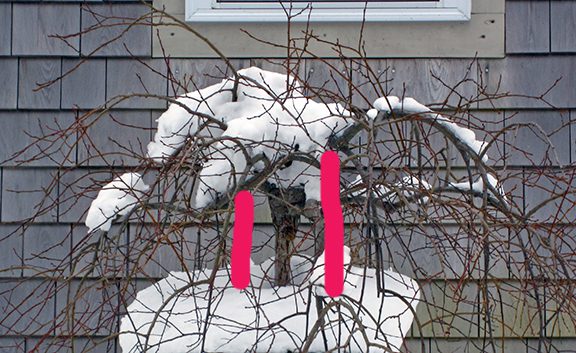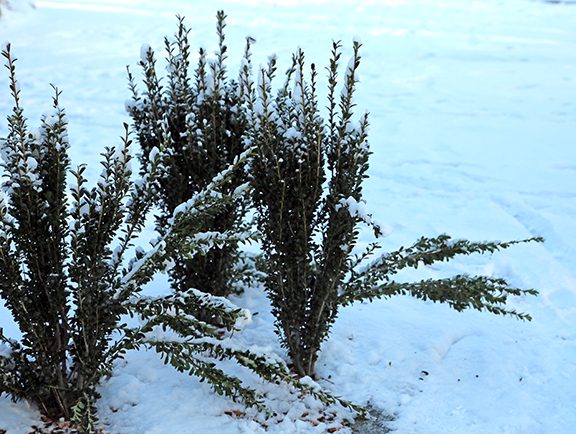Snow and the Landscape
Snow and the Landscape
As New England gets ready for a big snowfall, we at Hyannis Country Garden prepare to answer people’s questions about storm damage. The combination of a heavy, wet snow and wind can be harmful to many landscape plants. Perennials love the blanket of insulation that snow provides but shrubs and trees can become bent or broken. Here’s a rundown of possible problems and what you can do about them.
- Bending Branches: Evergreens are particularly prone to holding heavy snow loads and having their branches bent down with the weight. Some plants seem to handle this without damage while others are permanently affected. Short of wrapping all your plants up in burlap or creating tent-like shelters out of plywood (neither a particularly attractive look) there’s nothing you can do to protect plants from this sort of damage. Some people go outside during the storm to brush the snow off of accessible plants with a broom. Although this can be effective it puts the homeowner out in extreme weather which can be risky…which is more problematic, broken branches or broken arms and hips?
- Split Trunks: Plants with horizontal branching such as many varieties of Japanese maples are prone to more than just broken limbs. If the snow catches on the tops of these trees it can split the trunk in half. Those who have mature Japanese maples may want to prop up the largest horizontal trunks with a two by four or even an old broom cut down to size. (Placed broom side up to keep limbs from bending. If the ground is frozen so that the broom handle can’t be pushed into the soil, prop it in place with a cement block, rocks or other heavy objects.) If your tree trunk splits as a result of heavy snow, bolting it together with a thin bolt and two washers on each side of the trunk is a better fix than tying it or wrapping. When in doubt, call an arborist for repair help.
- Smashed Ornamental Grasses: Don’t worry about your grasses. Since they will soon get cut down short, these plants can become snow-flattened without damage. Cut them down to about six inches once the snow melts.
- Vole Protection: One of the problems that a heavy snow cover presents to the landscape is that the white stuff provides the perfect protection for voles. They can create passageways under the snow to travel to plants and feast on their bark or roots. Newly planted trees are the most vulnerable. If you’ve had problems with voles in the past you might want to either shovel the area right around your new trees or pack the snow down around the trunks so that there is no protective cover for the voles.
- Enjoy The View: The bottom line is that we have no control over the snowfall or the ultimate damage that is done to our plants so we might as well get cozy and enjoy the beauty of the winter weather. Spring will be here soon!
Download a pdf about dealing with damage after a storm by clicking here.



Subscribe To Our Newsletter
Sign up for our weekly email about sales and events.
